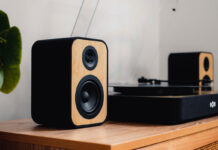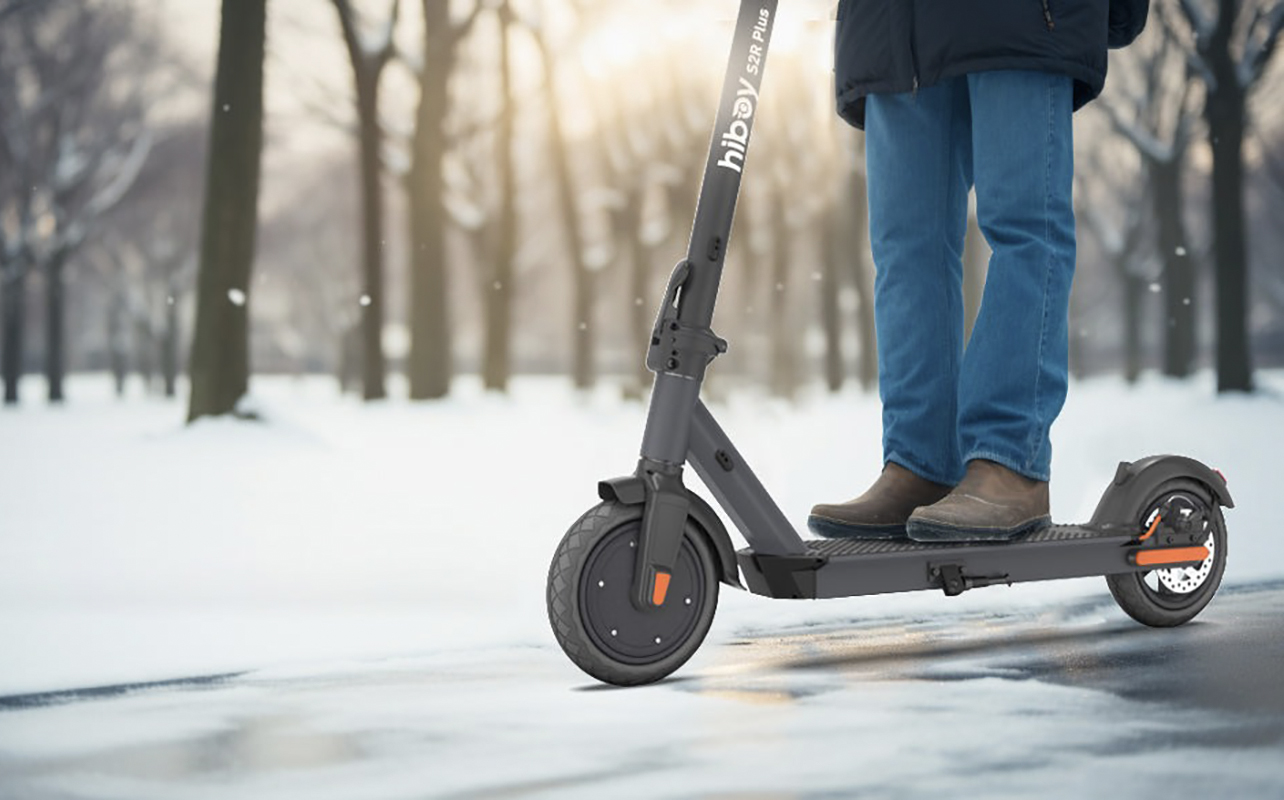
Electric scooters have become both a mode of transportation and a recreational activity for some. But as temperatures dip and winter weather sets in, the dynamics of riding an electric scooter in winter change significantly. Snow, ice, slush, and frigid winds can create unsafe conditions. That’s not only for riders but also for the scooters themselves. You can, however, still enjoy winter riding. It just requires a bit more planning, smarter choices, and routine care.
Whether you’re commuting, joyriding, or running errands, this guide will walk you through everything you need to know about safe riding practices and maintaining your electric scooter during winter. With these electric scooter winter tips, you’ll be prepared to handle the season with confidence.
Can you ride an electric scooter in the winter?
One of the most common questions electric scooter owners have is: “Can I use my scooter when it’s cold or snowy outside?” The short answer is yes. But only if done responsibly and with preparation.
Addressing common concerns about winter riding
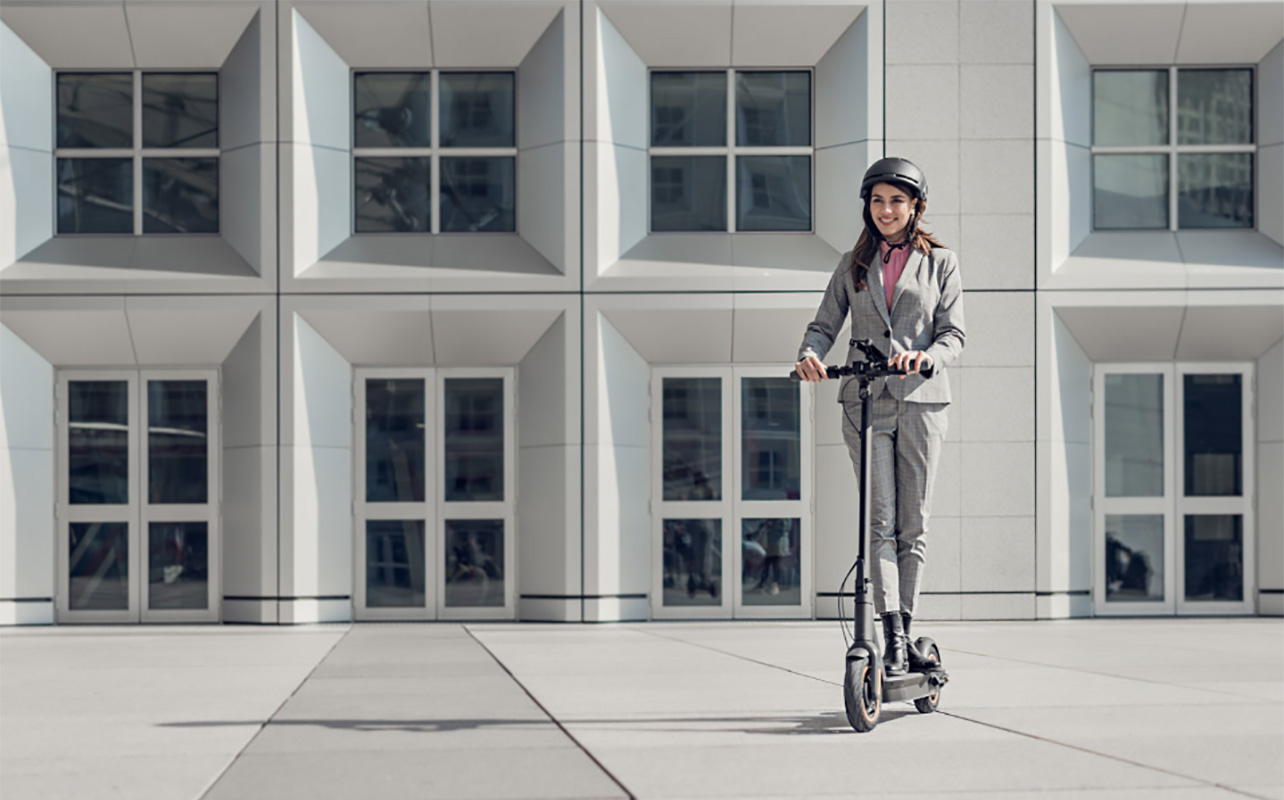
Many riders worry about slipping on icy roads, the battery dying faster, or damaging the scooter with snow and moisture. These are valid concerns, and understanding the risks is the first step toward safe winter scooting.
Cold weather can impact an electric scooter in many ways. First is battery efficiency. Lithium-ion batteries lose charge more quickly in freezing conditions. Then, there’s tire grip. Ice and slush reduce friction between your scooter’s tires and the road. Finally, there’s electronic components, which can be damaged from exposure to water and salt if the scooter isn’t waterproof. However, with the right scooter, proper gear, and mindful riding habits, you can absolutely ride in winter.
Differences between regular and winter-friendly scooters
Not all scooters are made equal. Some are better equipped to handle tough conditions. Winter-friendly scooters typically feature wider, air-filled tires for better grip. They meet an Ingress Protection (IP) rating of IP54 or higher for water resistance. Employing durable construction, they are designed to withstand wet, cold, and salty environments. Finally, they also boast higher motor power of at least 500W, which helps combat snow build-up and inclines.
When in doubt, check your scooter’s user manual or product page for its cold-weather and water resistance ratings. If you’re shopping for a model suited for winter, Best Buy’s electric scooter category includes several options with weather-resistant designs.
Challenges of riding an electric scooter in the snow
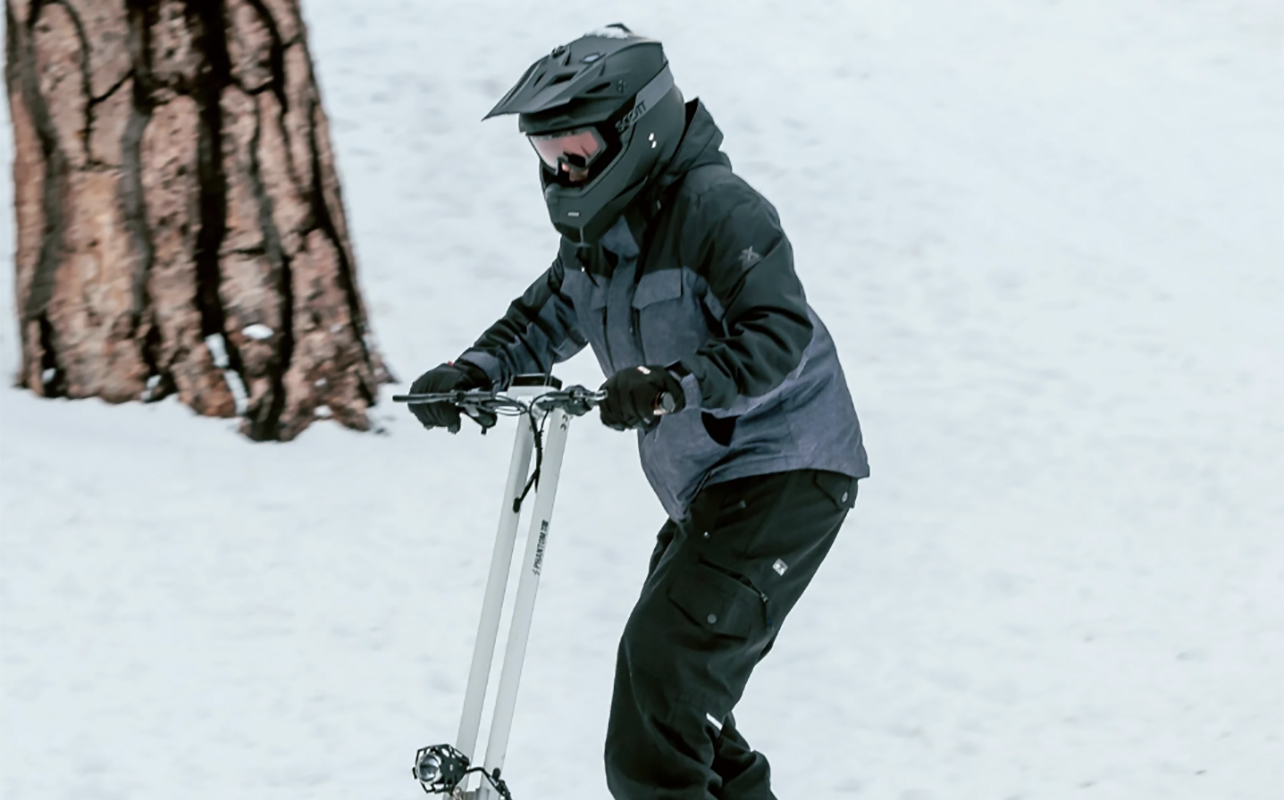
Winter weather throws a mix of unpredictable challenges your way. Being aware of them helps you make informed decisions about when and how to ride.
Ice, snow, and wet surfaces
Perhaps the most obvious challenge is how slippery things get. Icy patches, wet roads, or even powdery snow can reduce tire traction. This makes it easier to lose control. Regular tires may not provide the grip you need, especially when turning or braking. Slush and compacted snow also present hazards. They may hide deeper ice or uneven road surfaces. They can also collect in wheel wells, affecting mobility.
Reduced battery performance in cold weather
Battery life is directly affected by temperature. Cold air slows the chemical reactions within lithium-ion batteries, reducing their range and power output. You may notice that in the winter months, your scooter runs out of charge faster. You might also find that acceleration feels sluggish and that the scooter powers down unexpectedly if the battery is too cold. Some tips to mitigate this include storing your scooter (and battery) indoors and avoiding fully depleting the battery during rides.
Visibility issues and increased risk of slipping
In many regions, winter means shorter days and low-visibility weather like fog, snow, or rain. This makes it harder for both you and others (cars, bikes, pedestrians) to see each other. Pair this with slippery roads, and it becomes even more crucial to slow down, be alert, and increase visibility with lights and reflectors.
What to look for in an electric scooter for winter riding
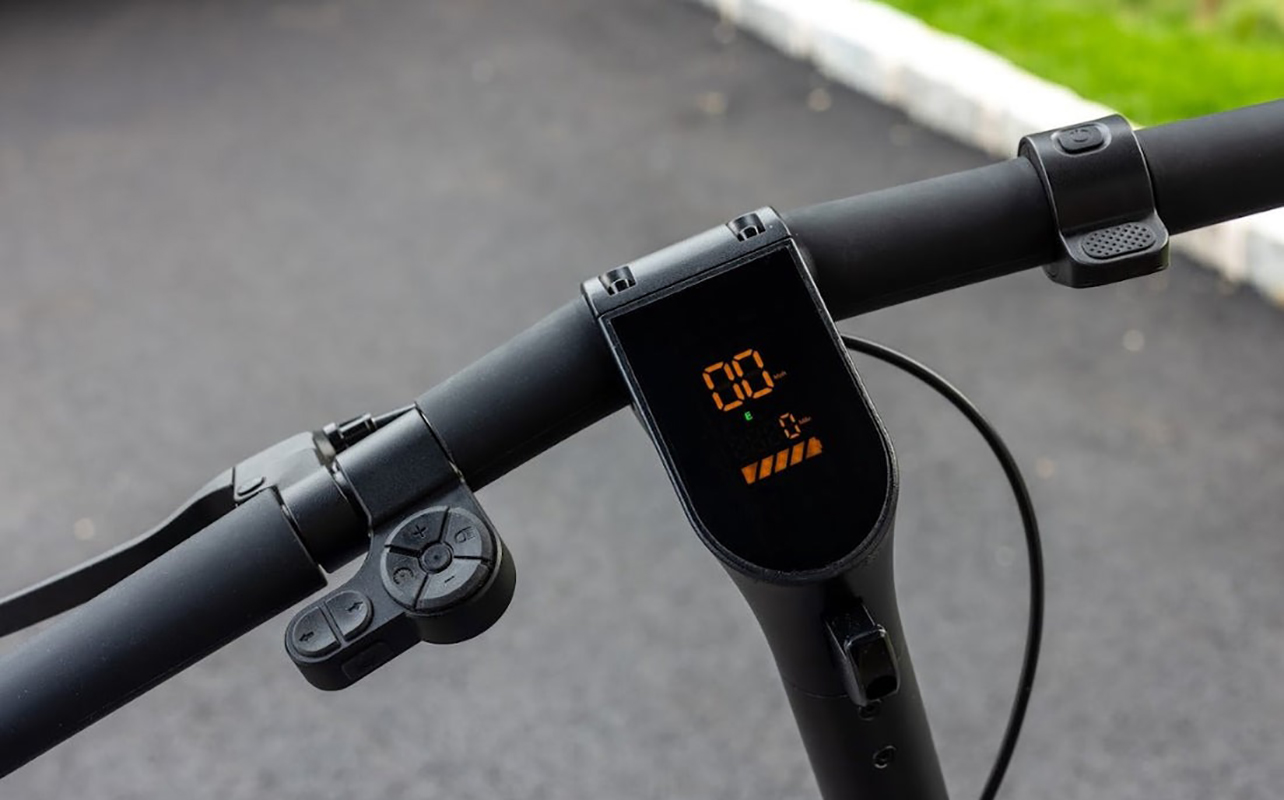
Choosing a winter-ready scooter means looking for features that enhance performance, safety, and durability in cold, wet conditions.
Winter-ready tires
Your first line of defense against slips is good tires. Look for tired with a wider profile, which distributes weight more evenly, improving stability. They should have deep tread patterns. Just like snow tires on cars, deeper treads give better grip. The tired should also be puncture resistant. Debris hidden in slush can cause flats, so durable tire construction is essential. Some electric scooters even have self-healing tires with an extra layer of sealant. The best type of electric scooters for winter are air-filled, or pneumatic tires. These absorb bumps better than solid tires, making for a smoother, safer ride in rough winter conditions.
Waterproofing
Moisture is your scooter’s worst enemy. IP ratings measure how resistant a device is to dust and water. For winter use, look for an electric scooter with a minimum IP54 rating, which protects against light splashes and road spray. An IP55 or IP66 rating offers better protection if you’re riding in heavy snow or slushy conditions.
Check that the charging port has a waterproof cover as well. Plus, avoid riding through deep puddles or snowbanks, even with an electric scooter that has a high IP rating.
Battery capacity and cold resistance
Since cold depletes battery performance, you’ll benefit from a higher capacity (Wh) battery. This will ensure you get more range, even with some power loss. Also look for temperature-resistant batteries, which you’ll find in some higher-end models. These use battery management systems (BMS) that help protect performance in freezing temps.
Always charge your battery indoors in a dry, room-temperature environment.
Powerful motor
A motor of at least 500W is recommended for snowy or icy roads. A stronger motor gives better traction and torque. You can scale things like piles of snow or speed over salt on the road more easily. You’ll also enjoy easier handling on inclines or slippery paths. You can navigate slippery areas and slight hills more comfortably and confidently. A more powerful motor also equates to improved acceleration even in wet conditions. Accelerate to get where you need to go, even with snow on the ground. Ideally, dual-motor scooters are even better for winter riders who need extra control and power.
Robust frame
Winter riding can be tough on materials. A rugged scooter frame can withstand bumps, impacts, and road salt corrosion. Look for materials like aerospace-grade aluminum, steel, or magnesium alloy. It should also have elements to protect inner components from moisture and dirt, like port covers or protected areas. This helps ensure moisture and dirt doesn’t get where it shouldn’t. The frame should also be able to support heavier riders with winter gear on. The weight capacity should be higher than average, especially for larger individuals who need to add a few more pounds with all their winter gear.
Adjustable suspension
Suspension systems help absorb shocks from potholes, ice chunks, or uneven snow. Adjustable suspension lets you tweak settings for softer or firmer rides depending on road conditions.
Braking system
Reliable brakes are essential. Winter-friendly scooters should have disc or drum brakes for strong mechanical stopping power. They should also offer regenerative braking to assist on slick surfaces. A dual braking systems (front and rear) affords extra safety. Hydraulic brakes offer the best performance in winter due to their smooth responsiveness, but mechanical disc brakes are a close second.
Not sure which scooter features matter most for your riding style? Our electric scooter buying guide breaks down everything from motor power to tire types to help you choose the best model—winter or not.
Essential winter riding tips for electric scooters
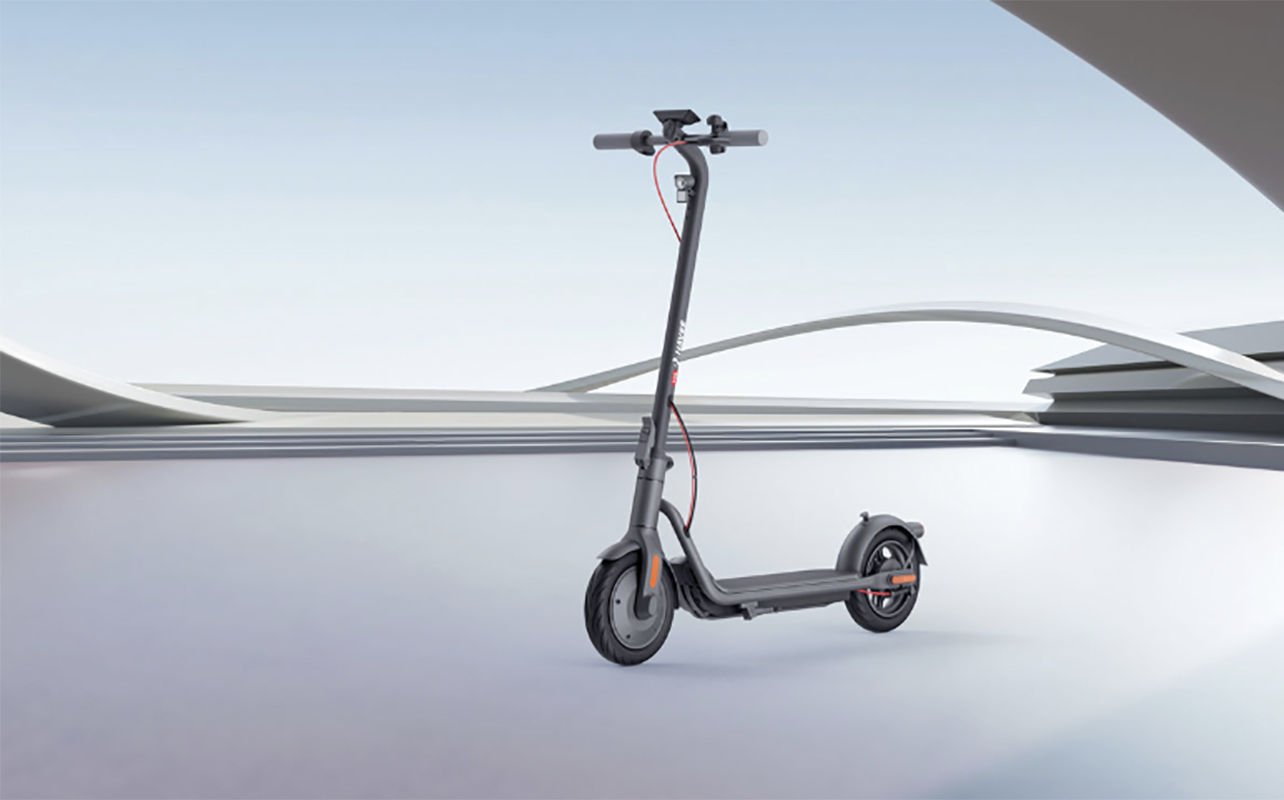
Technology aside, your riding habits play a huge role in staying safe during winter.
Proper clothing and gear for cold-weather riding
Dress for warmth and visibility. This should include thermal base layers and waterproof outerwear to keep you dry and warm. Wear gloves with touchscreen compatibility to maintain dexterity while riding. Insulated boots are not just for warmth but also traction. Just like in any other season, a helmet is crucial. But for winter especially, look for one with a visor to shield your face from wind and snow. Finally, clothing with reflective strips or a reflective vest helps boost visibility.
Best riding techniques for icy or snowy conditions
Adapt your riding style for winter. Start slow, accelerating gradually to avoid wheelspin. Brake early and gently, since sudden stops can cause skidding. Avoid sharp turns by leaning too much, which can cause loss of balance. And stick to clear paths, avoiding areas with thick snow, ice, or hidden debris.
Importance of lights and reflectors for visibility
In winter, it’s not just about seeing, it’s about being seen. Install bright LED front and rear lights. Use helmet or jacket lights for added visibility. Add reflective tape to your scooter’s deck, stem, and wheels. If you don’t yet have lights, avoid riding in foggy or snowy weather until you have time to add them to your set-up.
How to maintain your electric scooter in winter
Winter riding exposes your scooter to grime, moisture, and road salt. Consistent maintenance keeps it running safely and efficiently.
Cleaning and drying after rides
Salt and slush buildup can lead to corrosion and mechanical issues. After every winter ride, wipe down the scooter with a soft, damp cloth to remove residue. Use a toothbrush or soft brush for hard-to-reach areas like brakes and wheels. Dry the scooter completely with a microfibre towel. Avoid using a high-pressure hose, which can force water into sensitive areas.
Battery care to prevent cold-weather damage
To protect the battery, make sure to store it indoors at room temperature when not in use. Avoid charging it immediately after a cold ride. Let the battery warm up first. Never charge a wet scooter or battery. Keep the battery between 50%–80% charged if you aren’t going to be riding for a while.
Storing your scooter properly when not in use
When not riding daily, store the scooter in a dry, climate-controlled space. Use a kickstand mat or drip tray to protect floors. Cover the scooter to keep dust and moisture away. Disconnect and remove the battery if you’re storing it long-term.
For a more in-depth year-round maintenance routine, don’t miss our article on electric scooter maintenance tips.
Safety precautions: Avoid these mistakes
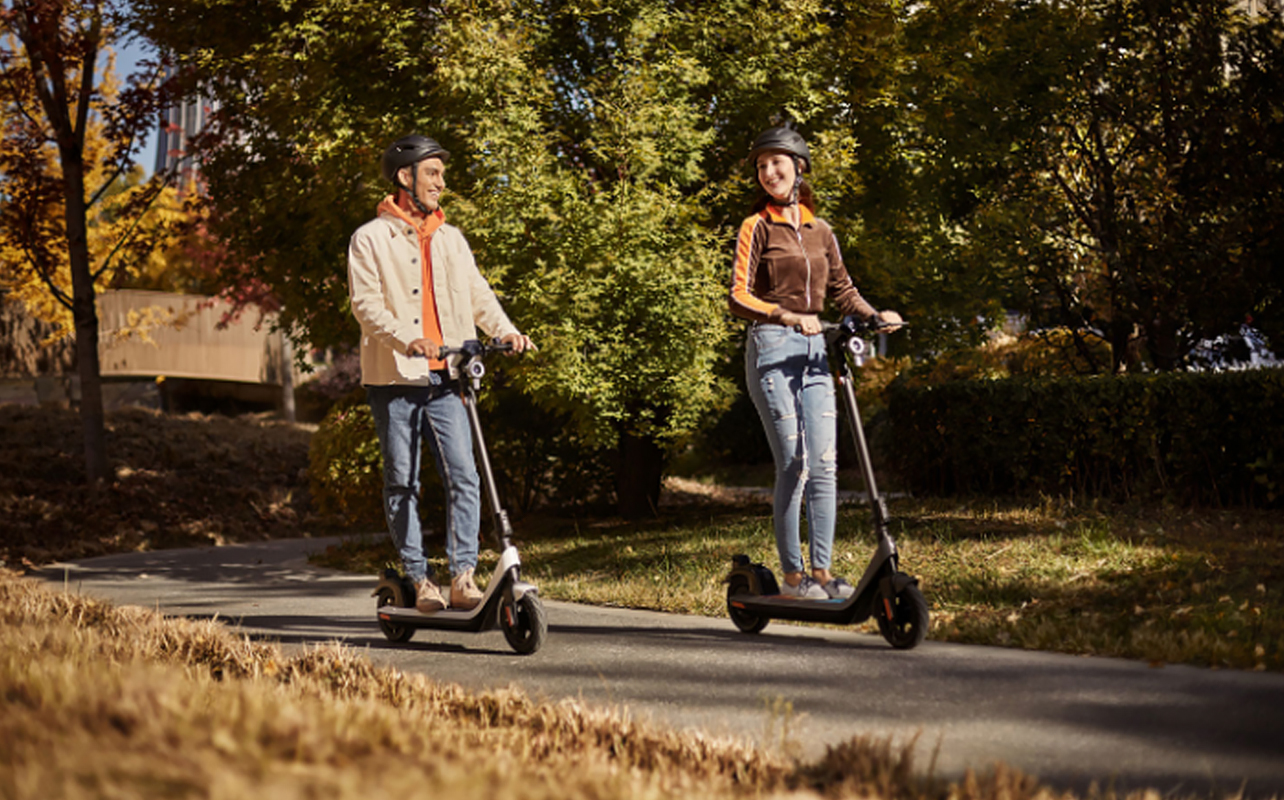
Even experienced riders can slip up, literally and figuratively. Knowing what not to do is just as important as knowing what to do. Along with general electric scooter safety tips, there are few additional ones to keep in mind for winter months.
Common winter riding mistakes
- Underestimating road conditions: Even when roads look dry, black ice can linger.
- Wearing non-grip shoes: Slipping while mounting or dismounting can lead to injury.
- Overloading the scooter: Extra winter gear adds weight, so check your scooter’s weight limit.
- Ignoring warning signs: Don’t ride if your scooter sounds odd or if the brakes feel unresponsive.
When not to ride your scooter (extreme conditions)
Skip riding altogether when there’s heavy snow accumulation or if icy rain or freezing fog is in the forecast. If visibility drops significantly, delay your ride until it’s safer to do so. If you know that road salt has created thick sludge or slush on your usual route, avoid it. When in doubt, choose safety and opt for alternative transportation.
Emergency preparedness (what to carry while riding)
Keep a winter riding kit in your bag or pouch that includes the following:
- Phone with a full charge
- Portable battery pack
- Multitool for on-the-go adjustments
- Mini flashlight
- First-aid kit
- Emergency contact information
Also, inform someone of your route and estimated time of return, especially if you’re riding after dark or in bad weather.
Embrace winter with confidence
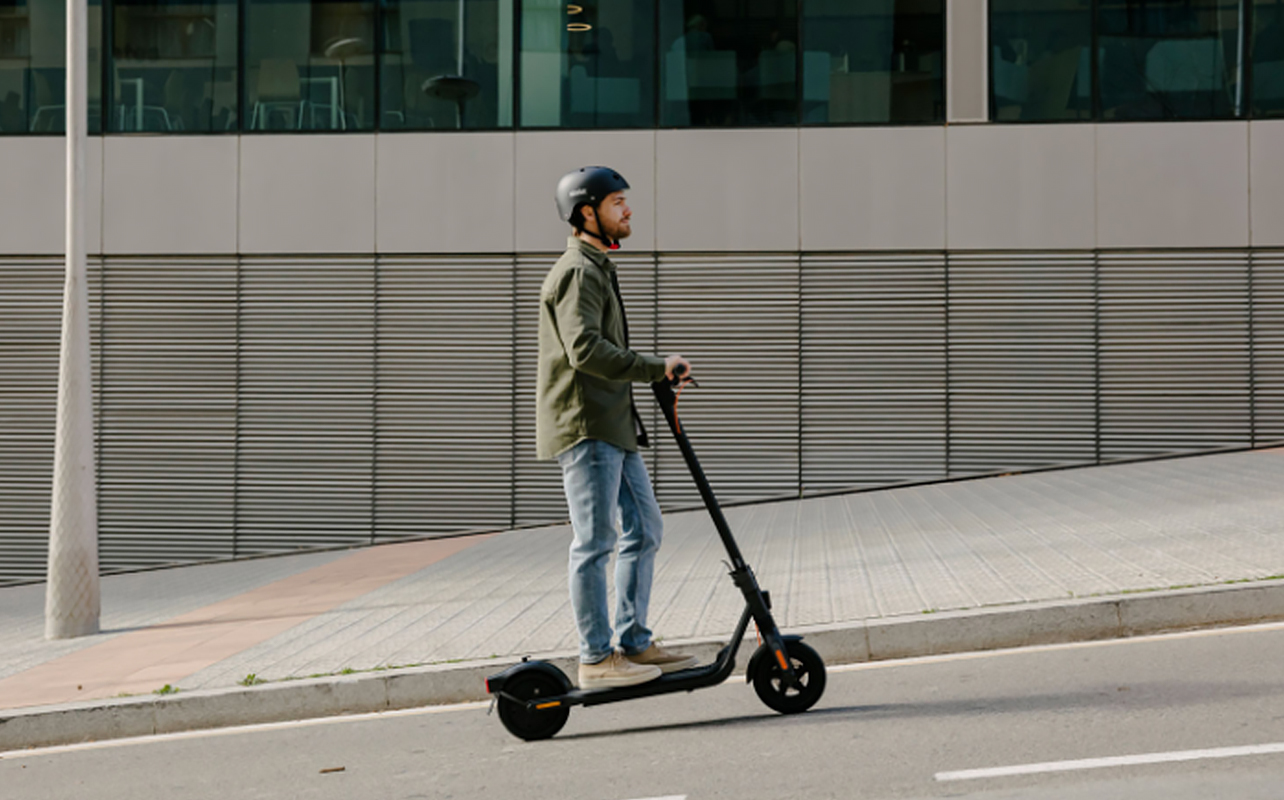
Riding an electric scooter in the winter isn’t impossible, it just requires a smart approach. With the right scooter features, smart clothing choices, and regular maintenance, you can extend your riding season while keeping safety front and centre.
Whether you’re braving snowy sidewalks or damp bike paths, following these electric scooter winter tips will help you ride with confidence, reduce wear and tear, and get the most out of your investment.
Looking for a winter-ready scooter or parts to upgrade your current one? Check out Best Buy’s electric scooter collection for a wide selection.
Stay warm, stay safe, and enjoy the ride all year long.
This article was drafted using AI technology and then reviewed, fact-checked, and revised by a member of our editorial team.





